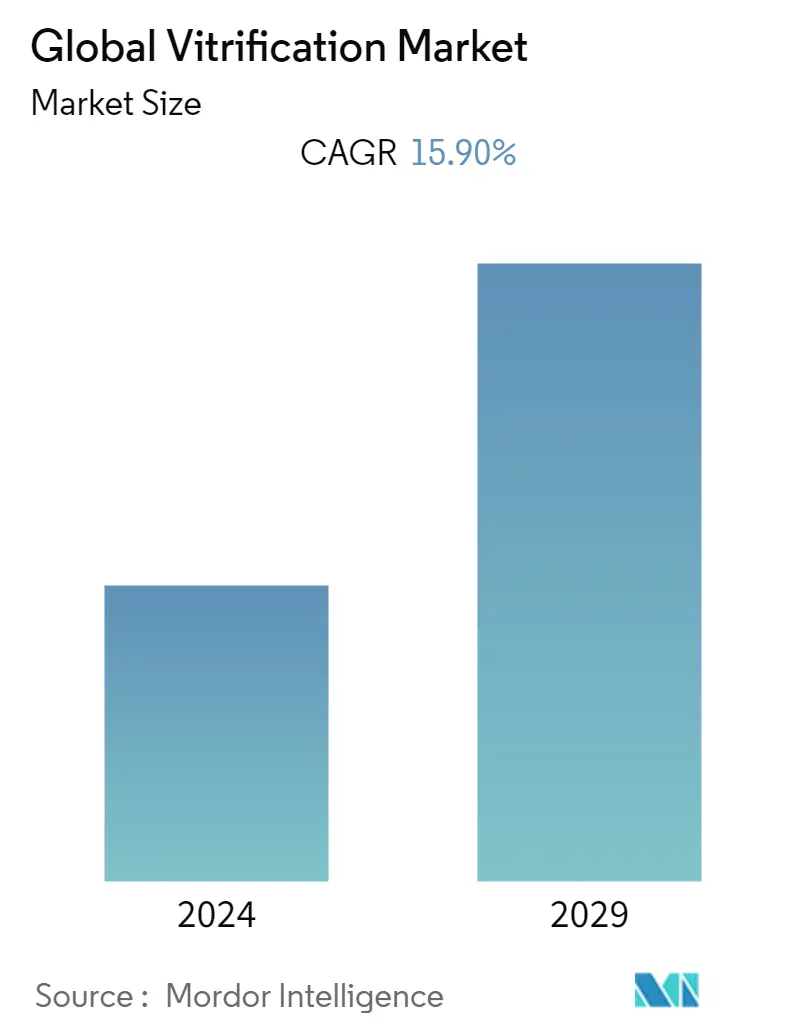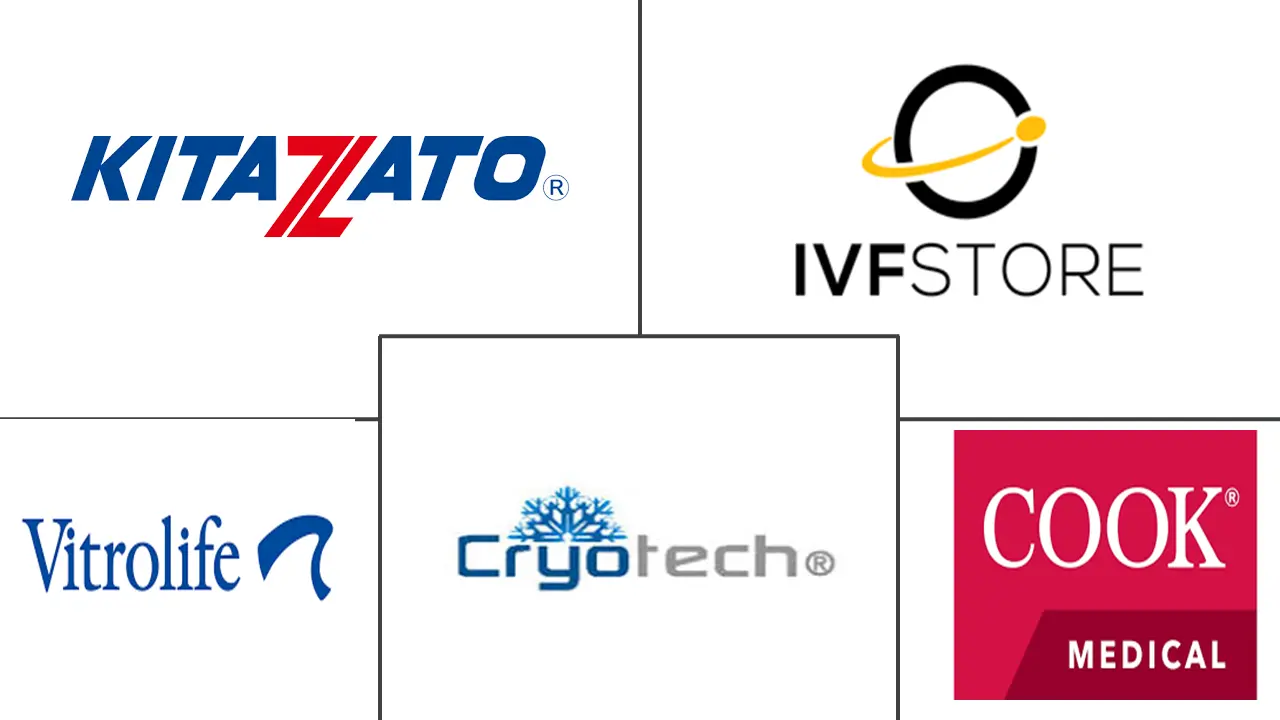Market Size of Global Vitrification Industry

| Study Period | 2019 - 2029 |
| Base Year For Estimation | 2023 |
| CAGR | 15.90 % |
| Fastest Growing Market | Asia-Pacific |
| Largest Market | Europe |
| Market Concentration | Medium |
Major Players
*Disclaimer: Major Players sorted in no particular order |
Need a report that reflects how COVID-19 has impacted this market and its growth?
Vitrification Market Analysis
The vitrification market is projected to register a CAGR of 15.9% during the forecast period (2021-2026).
During the Covid-19 pandemic, scientific groups such as the European Society for Human Reproduction and Embryology and the American Society for Reproductive Medicine have issued advice and guidelines to help people who are undergoing in-vitro fertilization treatments overcome and flatten the infection curve. There is no significant impact of Covid-19 on the vitrification market, as the process involves controlled procedures, that reduce the risk of contamination of the samples during vitrification and storage. They can successfully reduce the danger of cross-contamination and infection caused by the current Covid-19 pandemic or other viral exposures.
Many factors are propelling the market growth, some of them include, growth in fertility preservation techniques delayed childbearing due to sociodemographic factors, and increasing awareness of reproductive health among people. Several studies and trials have been undertaken to demonstrate the efficacy of vitrification over slow freezing, resulting in its expanded clinical use. Most Invitro Fertilization (IVF) clinics are currently employing this procedure to freeze eggs/embryos and provide a better success rate to patients, which is driving the industry. Besides this, various firms provide cost-effective specimen preservation services, which expands the vitrification market's potential
Furthermore, delayed childbearing is due to sociodemographic factors is also contributing to the vitrification market. Delayed childbirth is a significant shift in reproductive behavior that affects all developed countries. This has increased the number of births among women in their forties and fifties. For instance, according to a study published in 2019 in Cairn.info, a French-language web portal of humanities and social sciences, infertility rates rise rapidly, with the percentage of women who are unable to conceive rises from 17% at age 40 to 56% at age 45. To overcome this problem and postpone their parenthood, people are inclined towards vitrification. For instance, according to the Centers for Diseases Control and Prevention (CDC), in 2019, 448 reporting clinics in the United States executed 330,773 Assisted Reproductive Technology (ART) cycles, resulting in 77,998 live births (delivery of one or more living newborns) and 83,946 live-born infants. In 2019, 121,086 of the 330,773 ART cycles were egg or embryo banking cycles, in which 100% of the resultant eggs or embryos were saved for future use. Therefore, delayed parenthood in developed countries resulted in an inclination towards vitrification, which in turn boosts the market growth.
